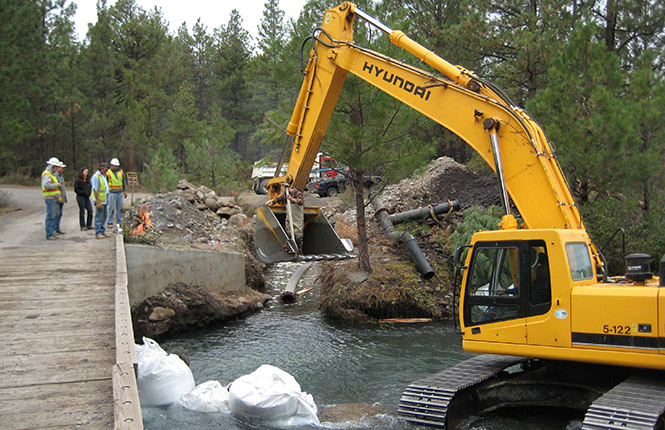This article was published on: 02/22/16 4:19 PM

Photo credit: Mathias Perle, Upper Deschutes Watershed Council
Let me paint a picture of the summer of 1977 in Sisters, Oregon. The population was less than 700 people, many of whom were farmers. A drought had devastated the snowpack in the Cascades, leaving almost no water in Whychus Creek.
What little water flowing in the creek was diverted to fulfill only 10% of the expected water for farmers. That summer, the creek ran dry through the City of Sisters.It was a disaster for fish and a disaster for farming families.
Fast forward 38 years to 2015. Another severe drought hit Central Oregon and much of the West. Snowpack in the Cascades was only a fraction of normal. Mountains were bare. Glaciers were melting.
But what happened in Whychus Creek last year?
“We were able to maintain a daily average flow of 20 cfs in Whychus Creek while delivering 20-40% of expected water to farmers,” said Marc Thalacker, District Manager, Three Sisters Irrigation District. “This was in addition to generatingclean green renewable power and conserving energy.”
Thanks to the forward-thinking water conservation projects that Three Sisters Irrigation District has completed with partners like the Deschutes River Conservancy, last year’s drought was a very different experience.
“Cooperation and collaboration by a wide variety of partner stakeholders made it possible for us to help fish and farmers while reducing Oregon’s carbon footprint.”



